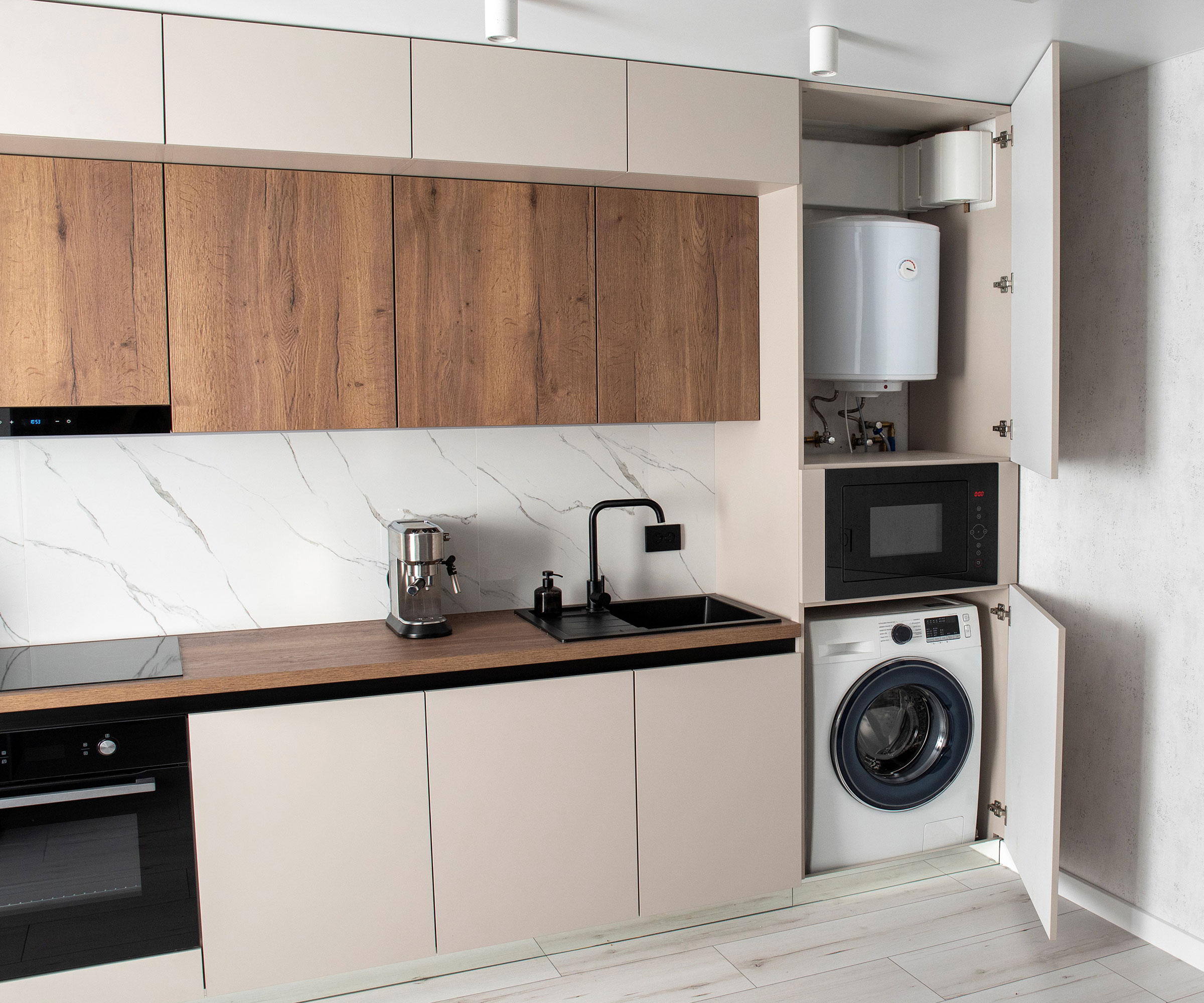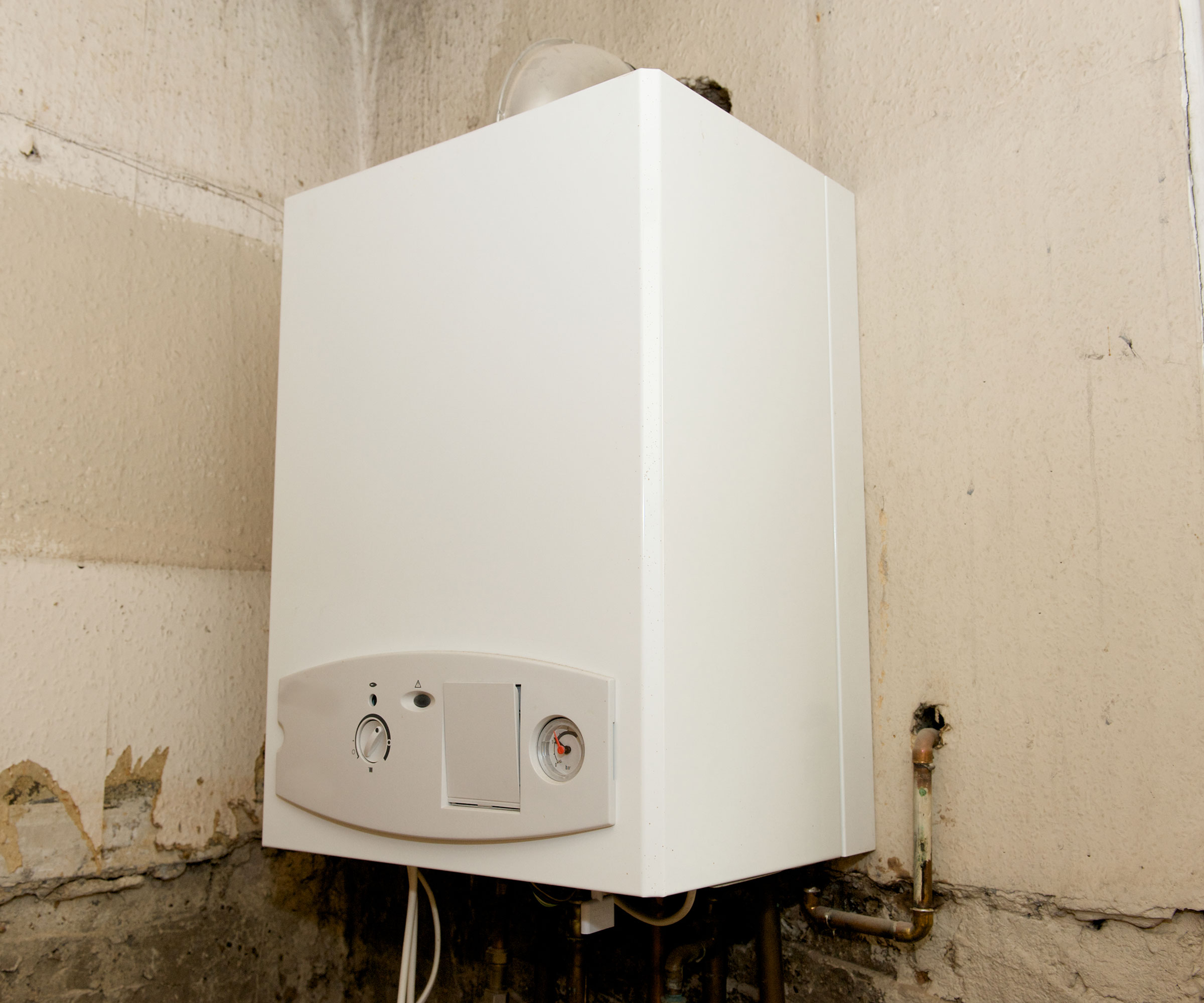Relocating a boiler can free up space and reduce noise — here's everything you need to know
From how to get the job done to timescales and costs, our guide to moving a boiler has it all

There are many reasons why moving a boiler might be a job on your to-do list, but do you know what the task entails, how long it'll take and the likely costs involved? If not, our guide is here to help, whether you are renovating a house or need more cupboard space.
"Moving your boiler can be a great solution to free up space and reduce noise in your home, but there are a few things you need to consider first," explains Ian Palmer-Smith, appliance repair expert at Domestic & General.
If you are considering relocating a boiler in your home, read on to ensure you know exactly what is in store.

Ian Palmer-Smith is a supplier and heating service director at Domestic & General and a domestic appliance service and repair expert with over 35 years of professional experience.
Is moving a boiler a DIY job?
If you were considering moving your boiler yourself, you will need to think again.
"Moving a boiler is not a DIY job, and should be carried out by a Gas Safe engineer," explains Ian Palmer-Smith. "The process requires proper planning, where the engineer will inspect the existing system and assess your home’s layout to ensure the boiler can be relocated safely."
Even though this is one of those DIY jobs to leave to the professionals, understanding the process, timescales and costs is still important.
The process of moving a boiler
If you have decided that your boiler would be better off in a different location to its current one, what can you expect when it comes to getting it to its new home?
Bring your dream home to life with expert advice, how to guides and design inspiration. Sign up for our newsletter and get two free tickets to a Homebuilding & Renovating Show near you.
Matthew Powell, founder and Registered Gas Safe Engineer at WarmZilla, explains the process.
- Initial survey: The engineer assesses the desired new location to ensure it complies with all building regulations, including ventilation requirements and safe distances from windows and doors for the flue.
- System drain-down: The entire central heating system is drained of water. The gas and water supplies to the boiler are safely isolated.
- Decommissioning: The old boiler is disconnected from the gas supply, water pipework, flue, and any electrical connections.
- Rerouting pipework: This is often the most labour-intensive part. New copper pipework needs to be run for heating flow and return, hot and cold water, and the gas supply. This may involve lifting floorboards or chasing into walls.
- Installing the flue: A new hole will be cored through the external wall for the flue terminal. The engineer must ensure the flue position adheres to strict Gas Safe regulations regarding proximity to windows, doors, and neighbouring properties.
- Condensate pipe: A modern condensing boiler produces wastewater (condensate) that needs to be drained. A new plastic pipe must be run from the boiler to a suitable internal drain (like a kitchen sink waste pipe). External runs are possible but must be insulated to prevent pipes freezing.
- Installation and commissioning: The boiler is mounted in its new location, and all new pipework and the flue are connected. The system is then refilled, and the engineer performs a series of safety checks and tests (commissioning) to ensure it's operating correctly and efficiently.

Matthew does everything he can to grow WarmZilla, whether that’s using his industry knowledge to improve services, leveraging his network to expand the brand, or identifying top talent to recruit.
How much does it cost to relocate a boiler?
Clearly, this is a complex – but usually very worthwhile – job. You need to include the cost of moving a boiler into your overall renovation costs.
"The cost of moving your boiler will depend on the costs of labour, pipework and fittings, and any additional work required," says Ian Palmer-Smith. "In general, a longer distance between boiler locations will require more labour and work.”
"The boiler itself is not the cost – the expense comes from the labour and materials required for the move," explains Matthew Powell. "Homeowners should budget anywhere from £800 to £2,500+ for the relocation job alone.
"The final cost is influenced by the distance the boiler is being moved, the type of floors and walls the new pipes must run through and the complexity of the flue installation," continues Matthew. "Costs can also rise if there are any additional system components, like a magnetic filter or new thermostats, added at the same time."

How long does it take to move a boiler?
The good news here is that, in the majority of cases, moving a boiler is a fairly quick job, so your heating and hot water won't be out of service for long.
"Moving a boiler will typically take up to two days, but the timeframe largely depends on different factors, like the type of boiler, where the new position is, and if any additional work is necessary," explains Ian Palmer-Smith.
"Moving a boiler a short distance within the same room could take a single day," picks up Matthew Powell. "However, moving a boiler from one floor to another, or to the opposite side of the house, could easily take two to three days. This is due to the extensive new pipework required, lifting flooring, and potentially more complex flue arrangements."
Where is the best place for a boiler?
You can't just move a boiler anywhere you like – whether you want to put your boiler in a loft or a utility room, there are regulations you'll need to adhere to.
"Boilers need to be installed where there is sufficient airflow and easy access for maintenance, so should not be placed in a bedroom or bathroom for example," explains Ian Palmer-Smith. "Utility rooms, garages, and kitchens are more popular locations."
"The location of the flue is non-negotiable and must meet strict safety standards," picks up Matthew Powell. "A homeowner's ideal spot may not be feasible if a safe flue exit cannot be achieved.
"The new location must also have access to a suitable wastewater drain," continues Matthew. "Running a condensate pipe across a solid floor or to a distant drain can be complicated and add significant cost. If run externally, it's at risk of freezing in winter, which would cause the boiler to shut down."
Is boiler replacement better than relocation?
Perhaps you radiators are not working, or your boiler is starting to fail you – if you have had your boiler for some time, it might actually be a good idea to consider replacing it at the same time as the move.
"Before moving your boiler, check if it’s time to replace it instead, which could save you from a costly boiler repair in the future," points out Ian Palmer-Smith.
"If your boiler is more than ten years old and showing signs of inefficiency or wear, then replacing it could save you in the long-run."

FAQs
Is moving a boiler a good idea?
This depends on why you want to move it – there are many reasons why relocating a boiler can be helpful.
"Kitchen and home renovations are the most frequent drivers," reveals Matthew Powell. "A new kitchen layout or a home extension often requires the boiler to be moved to create space for new units or to fit the revised floor plan.
"Noise reduction is another one. Moving a boiler out of a high-traffic living area or a bedroom can significantly reduce ambient noise in the home. And don't forget improved accessibility," continues Matthew. "Relocating a boiler from a tight, difficult-to-access cupboard to a more open location makes annual servicing and any future repairs much easier for an engineer."
Double check, before moving your boiler, that any guarantees won't be affected if it is still in warranty too.
Is moving a boiler disruptive?
While this is not a job that takes too long, don't forget that there will be a level of mess involved and some making good will be required afterwards – so factor in internal plastering costs to your overall budget.
"The process will leave disruption," warns Matthew Powell. "Old pipework holes will need to be filled, walls may need replastering where new pipes have been channelled, and floorboards will have been lifted. The cost of redecorating is often not included in the engineer's quote."
If you have decided that you need a new boiler, be sure to research everything there is to know about choosing a new boiler first.
Natasha was Homebuilding & Renovating’s Associate Content Editor and was a member of the Homebuilding team for over two decades. In her role on Homebuilding & Renovating she imparted her knowledge on a wide range of renovation topics, from window condensation to renovating bathrooms, to removing walls and adding an extension. She continues to write for Homebuilding on these topics, and more. An experienced journalist and renovation expert, she also writes for a number of other homes titles, including Homes & Gardens and Ideal Homes. Over the years Natasha has renovated and carried out a side extension to a Victorian terrace. She is currently living in the rural Edwardian cottage she renovated and extended on a largely DIY basis, living on site for the duration of the project.

